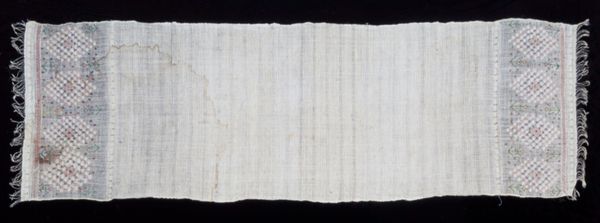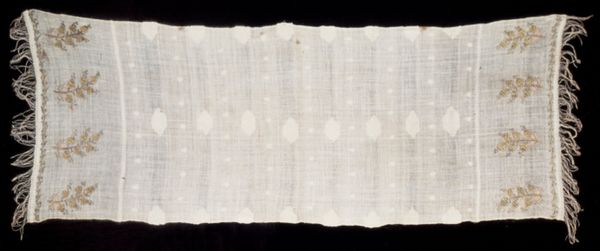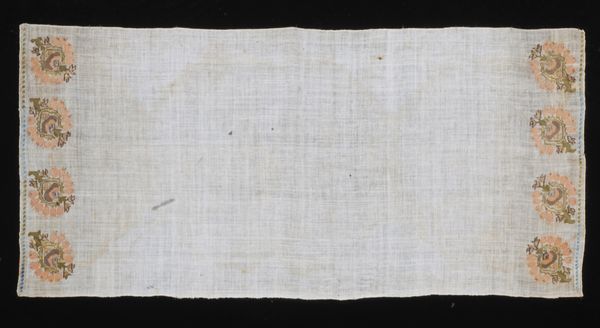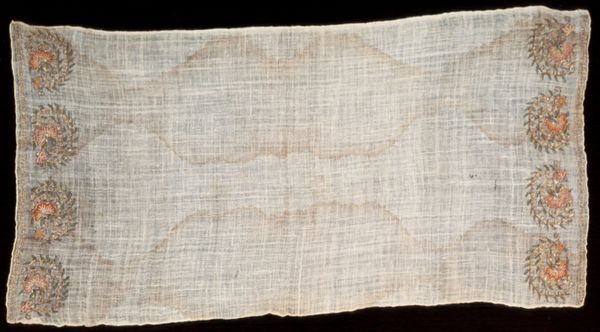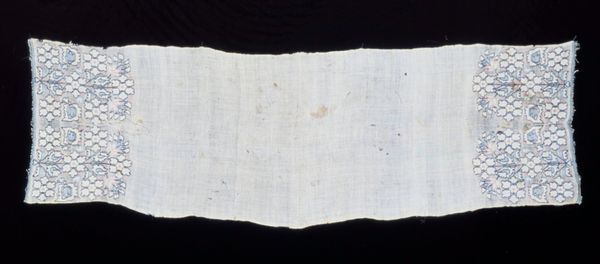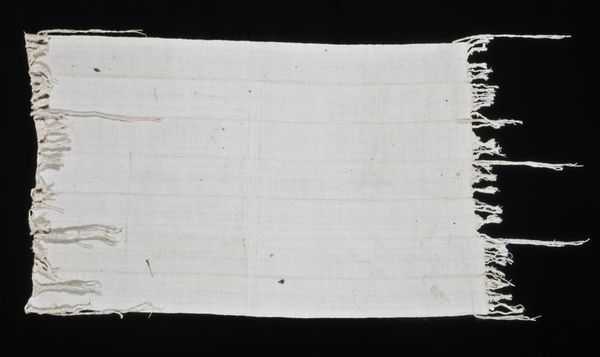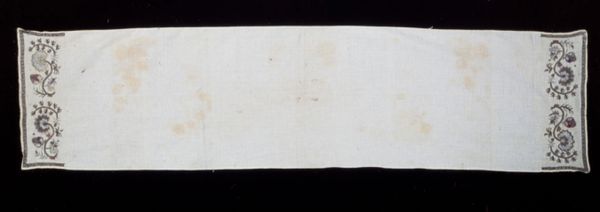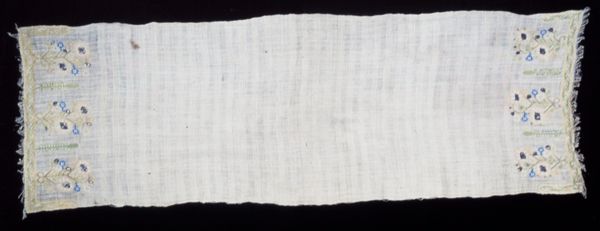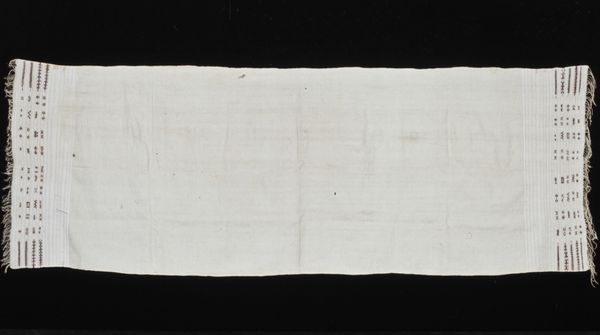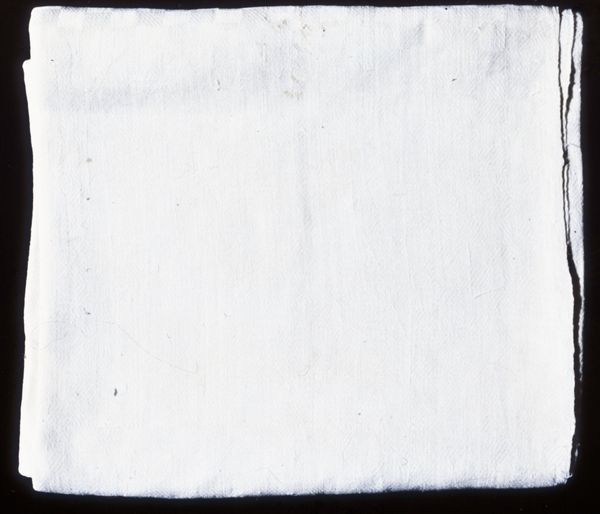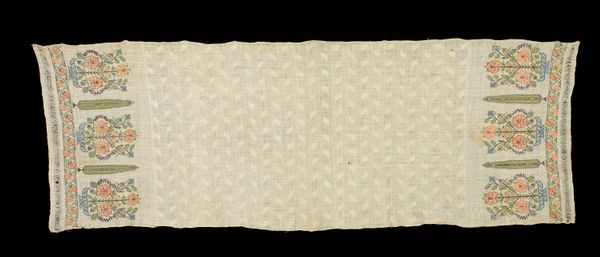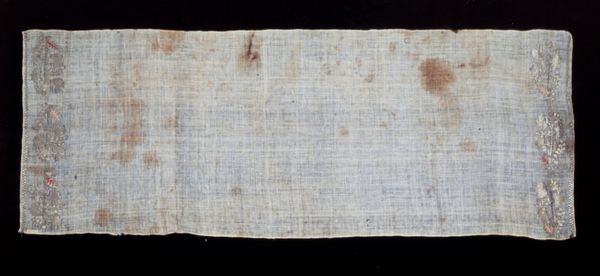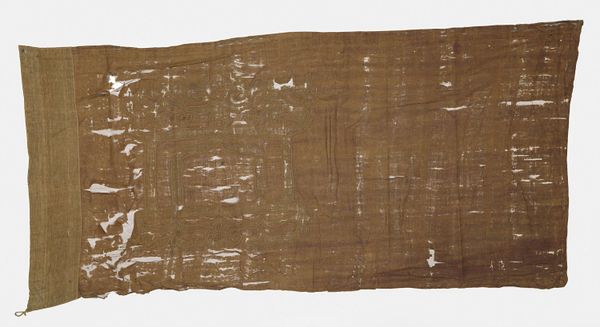
weaving, textile, cotton
#
weaving
#
textile
#
white palette
#
cotton
Dimensions: 85 x 42 1/2 in. (215.9 x 108 cm) (uneven; with fringe)
Copyright: Public Domain
Curator: At first glance, this "Shawl from a wedding outfilt," as it's called, looks deceptively simple: a plain white rectangle with tassels. Its beauty resides in its texture, an intricate landscape of subtle ridges. Editor: It’s like a blank slate, pregnant with possibility and fresh starts. It communicates a feeling of purity, new beginnings, the quiet promise of a wedding vow. But the plainness also gives it a certain solemnity, don’t you think? Curator: Absolutely. Given that this weaving probably dates from around the 20th century, constructed with cotton threads, I find myself reflecting on the labor involved. Think about the processes needed to transform cotton into fabric and the skills passed down. We're dealing with the legacy of human effort. Editor: And it embodies ritual! White, across countless cultures, symbolizes transitions, ceremonies. We're not just looking at cotton threads here; it speaks to tradition. Every knot, every weft thread, binds a person to heritage and collective hope. Curator: The act of its creation might function as a metaphor for constructing a marriage. Each individual element strengthens when combined, transforming simple fibers into a whole that conveys both form and meaning. And let’s not ignore the material conditions – access to certain threads or the looms on which it was woven surely dictated its appearance. Editor: That makes me wonder: who wore this and what did they think of when they did? It has served not only as protection but perhaps a marker of cultural identity as well. How the bride interacted with this garment – and even its afterlife – shapes our perspective. Curator: Thinking about its functionality emphasizes how closely integrated the decorative and practical aspects of a wedding garment were; these weren't mutually exclusive features. How effectively the cotton could insulate may speak volumes regarding the economic status or the region to which it was from. Editor: By analyzing the symbolism and weaving as related concepts, perhaps the act of marriage could create more awareness, thus creating an enduring meaning for those celebrating, observing and even wearing. It really transcends mere textiles, doesn't it? Curator: Yes, thinking about how raw materials impact finished art never ceases to give a broader picture than initially imagined. Editor: And delving into the possible symbolism invites reflections that have lasted through many wedding vows to be exchanged.
Comments
No comments
Be the first to comment and join the conversation on the ultimate creative platform.
